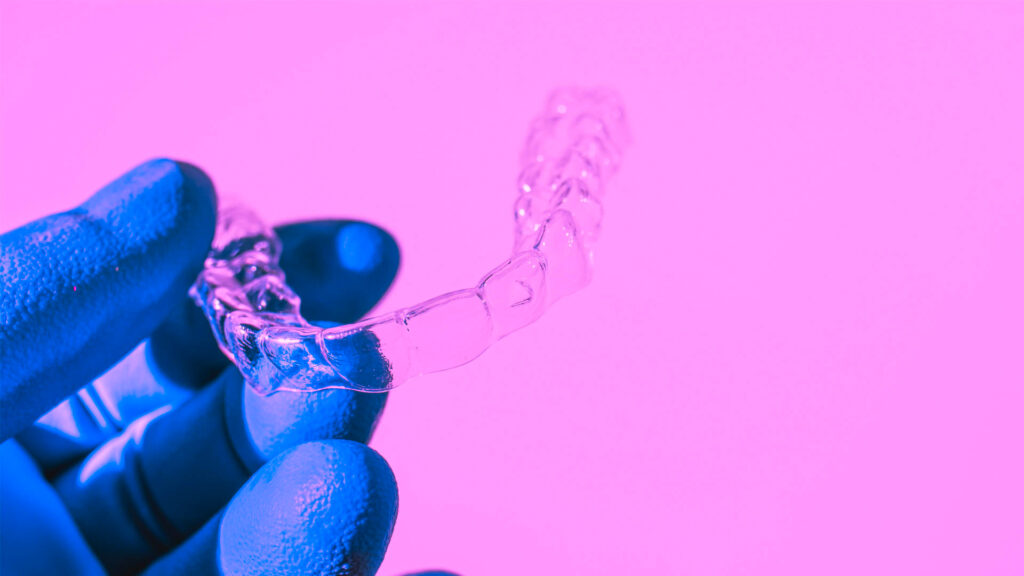Invisalign is an orthopedic dental method that can help patients achieve a confident smile, but patients do not need to specifically go to an Invisalign dentist. A general dentist can also provide Invisalign.
Aligners have grown in popularity, with eight million people worldwide choosing Invisalign as an orthodontic treatment to straighten their smile.

What is Invisalign?
Invisalign is an orthodontic treatment that gently pushes a patient’s teeth into alignment through the use of clear, plastic aligners.
Invisalign as an Orthodontic Treatment
As an orthodontic treatment, an Invisalign dentist can use Invisalign to treat several orthodontic conditions that braces can fix. These orthodontic conditions include crooked, crowded, or gapped teeth, as well as underbites, overbites, crossbites, and open bites. Invisalign also works as a cosmetic treatment to improve the patient’s smile and confidence.
It works similar to braces by moving the teeth through applied pressure. This helps to eventually bring the teeth into better alignment.
Invisalign vs. Braces
So, what’s better, Invisalign or braces? It really depends on your case, but your Invisalign dentist will be able to give you the answer that works best for you and your teeth.
Invisalign works as an alternate method to the more traditional braces, because both help a patient achieve a more confident smile. Invisalign and braces are similar in their goal to align a patient’s teeth by applying pressure to the teeth, but there are also several differences.
Listed below are the advantages an Invisalign dentist can offer to patients that braces do not:
- Comfort. Invisalign is plastic rather than metal, so it tends to be more comfortable than traditional braces, which can cut and irritate the mouth with metal and wires.
- Convenience. Invisalign is more convenient because patients can take off their aligners when they eat, brush, and floss. This is not true for braces, because patients have to learn new brushing and flossing techniques. Patients also have to adjust their diets so their braces are not damaged and food does not get stuck in them and cause gingivitis.
- Discretion. Invisalign is also better for patients who wish to be more discreet with their treatment and do not wish to compromise their aesthetic. This is because Invisalign uses clear plastic and is practically unnoticeable, unlike braces which tend to stand out. As such, Invisalign does not take away a patient’s confidence.
How Effective is Invisalign?

Currently, there is a limited study on the effectiveness of Invisalign, but research has suggested that Invisalign is more effective than other clear aligners. Its product design is also becoming better and more effective with time.
Invisalign is also most effective when worn the correct amount of hours a day – 20 to 22 hours. For optimal effectiveness, An Invisalign dentist will recommend that your Invisalign only be removed when eating or drinking, flossing or brushing teeth, or cleaning the product.
When cleaning the aligners, it is important not to wash them in very hot water as it can warp the plastic, altering its fit and proving to be less effective.
What are the Benefits of Invisalign?
There are several reasons why patients may choose Invisalign over braces or other orthodontic methods. The benefits of Invisalign are:
- It is more aesthetically pleasing. Invisalign is a popular choice for patients who wish to avoid the obvious wires and brackets. It is an aesthetically pleasing method that will not conspicuously alter a patient’s appearance.
- Easy removal. Invisalign can also be easily removed, unlike braces.
- Easier to clean teeth. Because of the above benefit, it is also easier for Invisalign dentist patients to brush and floss their teeth, meaning more bacteria gets brushed away.
- Fewer potential complications. Complications can also arise in braces, including broken wires. Invisalign dentist patients do not have these problems, which means no unexpected emergency to the orthodontist.

